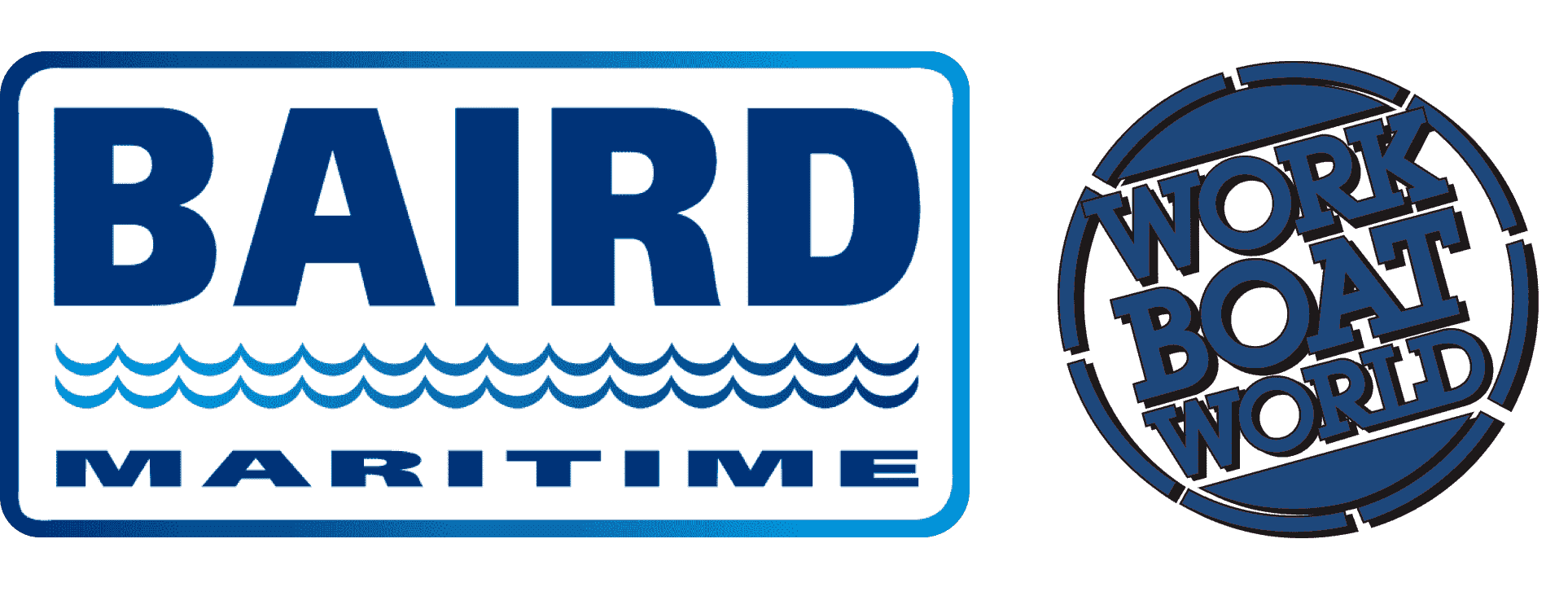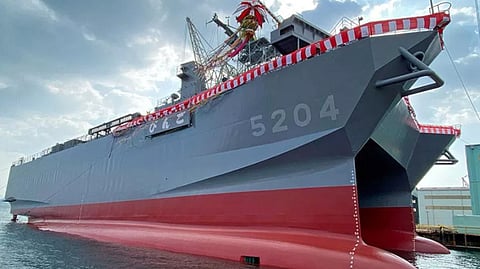Japan's newest SWATH surveillance ship floated out
Mitsubishi Heavy Industries Maritime Systems, a wholly-owned operating company of Mitsubishi Heavy Industries, launched a new ocean surveillance ship into the water on Monday, February 17.
The future JS Bingo is named after two former administrative districts of Japan. It is the fourth of the Hibiki-class surveillance ships to be built for the Japan Maritime Self-Defence Force (JMSDF).
The Hibiki-class ships were originally developed in the late 1980s during the closing years of the Cold War to provide the JMSDF with enhanced ocean surveillance capability in response to the Soviet Navy's regular deployments of diesel-electric submarines near Japanese territorial waters.
Even after the collapse of the Soviet Union, the design and construction of these submarine detection and tracking ships continued. The first two vessels, JS Hibiki and JS Harima, were commissioned into service in 1991 and 1992, respectively, and are still in operation, being homeported in Kure in Hiroshima prefecture, while the third ship, JS Aki, was handed over in 2021.
The Japanese Ministry of Defence's decision to build another Hibiki-class surveillance ship nearly 30 years after the second one was completed was influenced by the fact that some of Japan's neighbours have been steadily expanding their respective submarine fleets within the last decade.
Upon completion, the future Bingo will have a length of 67 metres, a beam of 29.9 metres, a draught of 7.5 metres, and a displacement of 3,048 tonnes at full load. It was designed to operate at low speeds while conducting surveillance, and the SWATH hull ensures improved stability even when sailing in bad weather and higher sea states.
The standard SWATH design is a proven one for ocean surveillance, as evidenced by the US and Chinese navies adopting the same design for their own ships that perform the same undersea monitoring role.
The ship was designed to be crewed by 40 personnel at any given time. The crew complement will also include five civilian technicians who will assist the JMSDF personnel in operating the vessel's array of ocean surveillance equipment, which includes an AN/UQQ-2 Surveillance Towed Array Sensor System (SURTASS).


